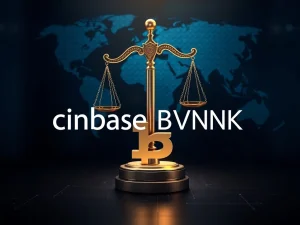Pivotal JPMorgan SEC Meeting Explores Capital Markets Onchain Future

Imagine the core of global finance, the vast network of capital markets, undergoing a digital revolution. This is exactly what top executives from JPMorgan Chase and the U.S. Securities and Exchange Commission (SEC) recently discussed. Their meeting centered on the potential for moving capital markets onchain, a topic that could reshape how financial instruments are traded and managed.
Understanding the Significance of the JPMorgan SEC Meeting
This wasn’t just a casual chat. Three senior JPMorgan executives sat down with the SEC’s dedicated Crypto Task Force. The primary focus of this significant JPMorgan SEC meeting was exploring the ramifications of existing capital markets activity transitioning onto public blockchains. They delved into:
- Which specific capital markets instruments are candidates for moving onchain?
- How might the current financial model need to adapt?
- What are the key risks and benefits firms must evaluate during this transition?
This discussion highlights the increasing seriousness with which major financial institutions and regulators are approaching blockchain technology beyond just cryptocurrencies.
JPMorgan’s Existing Digital Footprint and the JPMD Token
JPMorgan isn’t new to the digital asset space. During the meeting, they outlined their existing involvement, including a digital platform currently handling repurchase agreements. This platform is part of their ‘Digital Financing’ and ‘Digital Debt Services’ offerings, demonstrating their early steps in digitizing traditional financial processes.
Adding to this momentum, the meeting coincided with JPMorgan’s announcement of a pilot program for its deposit token, known as JPMD token. Launched on Coinbase’s Base blockchain, the JPMD token is designed for institutional clients to use in transactions once the pilot phase concludes. This move, following a trademark application for JPMD, underscores JPMorgan’s strategy to leverage blockchain for specific institutional use cases.
Navigating Digital Assets Regulation
A crucial part of the dialogue involved navigating the landscape of digital assets regulation. As more financial activity potentially moves onchain, understanding and adapting to existing and future regulatory frameworks is paramount. The SEC’s involvement through its Crypto Task Force signals their active role in monitoring and shaping how these new technologies integrate with established financial systems. The discussion aimed to clarify how firms can assess risks and ensure compliance in this evolving environment.
The Rise of Tokenized Assets and Competitive Advantage
The concept of tokenized assets was central to the conversation. Tokenization involves representing real-world assets (like stocks, bonds, or real estate) as digital tokens on a blockchain. This process promises benefits like increased liquidity, fractional ownership, faster settlement, and reduced costs.
JPMorgan is clearly assessing where it can gain a competitive edge in this shift towards tokenized assets. By exploring how to move existing capital markets functions onchain and developing initiatives like the JPMD token, they aim to position themselves at the forefront of this technological transformation. The goal is to unlock new efficiencies and potential revenue streams.
JPMD vs. Stablecoins: A Key Distinction
While the JPMD trademark sparked speculation about a potential stablecoin, a JPMorgan executive clarified that deposit tokens like JPMD are viewed as a ‘superior alternative’ for institutions compared to stablecoins. The reasoning provided centers on their fractional reserve backing, which is seen as more scalable, and their closer integration within the traditional banking framework. Unlike stablecoins, which are digital representations backed by reserves, deposit tokens directly represent dollar deposits held in customer bank accounts within the regulated banking system.
Conclusion: A Glimpse into Finance’s Future
The meeting between JPMorgan and the SEC’s Crypto Task Force marks a significant step in the ongoing convergence of traditional finance and blockchain technology. Discussing the migration of capital markets onchain, exploring initiatives like the JPMD token, and navigating digital assets regulation are not just theoretical exercises. They are active explorations by major players into how finance will operate in the future. The focus on tokenized assets and finding a competitive angle highlights the potential for innovation and efficiency gains. As these discussions continue and pilot programs like JPMD progress, we get a clearer picture of the path forward for digital finance.







